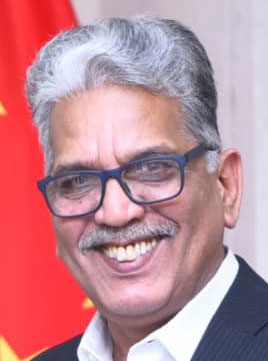
On May 21, 2025, Pakistan and China mark 74 years of diplomatic relations-a moment to reflect on a bond that has withstood the test of time, adapted to the evolving regional landscape, and grown into one of the most admired and robust partnerships in the world. Rooted in mutual trust, sovereign respect, and shared aspirations for peace and development, this relationship continues to serve as a model of bilateral cooperation.
From its humble beginnings in the early 1950s to a wide-ranging strategic alliance today, Pakistan-China relations have consistently demonstrated depth, resilience, and an unwavering commitment to mutual support.
Early Foundations: From Recognition to Formal Engagement
Pakistan was one of the first countries to recognize the People’s Republic of China in 1951, an early act that demonstrated foresight and goodwill. But it was in 1956, with the historic visit of Prime Minister Huseyn Shaheed Suhrawardy, that diplomatic ties were formally established, marking the beginning of an enduring partnership.
This early exchange set the tone for a relationship based on equality and mutual respect-qualities that continue to define bilateral interactions to this day. The momentum picked up in the following years, and in 1963, the two countries signed a landmark border agreement, resolving territorial matters peacefully and setting a precedent in international diplomacy.
A Journey Through the Decades
1970s: Pioneering Diplomacy on the Global Stage
The 1970s proved to be a pivotal era, as Pakistan played a key role in facilitating China’s opening to the West. Acting as a diplomatic bridge, Pakistan arranged the secret visit of U.S. Secretary of State Henry Kissinger to China in 1971-an event that changed the course of global politics. This gesture underscored Pakistan’s significance in China’s foreign policy and highlighted the level of trust between the two nations.
1980s-1990s: Expanding Frontiers of Cooperation
In the decades that followed, Pakistan-China relations expanded beyond diplomacy. There was a significant rise in economic collaboration, trade exchange, educational partnerships, and most notably, defense cooperation. This era saw the foundations being laid for long-term joint military projects and growing technology transfer, all underpinned by a mutual understanding of regional security dynamics.
Cultural exchanges and academic collaboration flourished, with Chinese language institutes and student exchange programs deepening the people-to-people connection between the two societies.
2000s: Strategic Partnership and Defense Collaboration
The beginning of the 21st century brought a marked shift in the relationship, elevating it to the level of a strategic partnership. A cornerstone of this era was the joint development of the JF-17 Thunder multirole fighter aircraft, a symbol of high-level military cooperation and technological synergy. This project showcased both countries’ ability to co-develop and co-produce advanced defense platforms, solidifying Pakistan’s air defense capabilities and further strengthening trust.
Alongside defense, civil nuclear cooperation began to take shape, with Chinese assistance in establishing nuclear power plants for peaceful energy use in Pakistan. These developments highlighted the multidimensional nature of the bilateral relationship, moving beyond political and defense spheres into energy security and industrial development.
2010s: The Dawn of CPEC and Economic Transformation
The defining moment of recent decades came with the historic visit of President Xi Jinping to Pakistan on April 21, 2015. This landmark visit saw the formal launch of the China-Pakistan Economic Corridor (CPEC), a transformative initiative under China’s Belt and Road Initiative (BRI).
CPEC, with planned investments exceeding $60 billion, promised to reshape Pakistan’s economic landscape through the development of roads, energy projects, industrial zones, and ports-most notably the strategic Gwadar Port. For China, CPEC offered a direct trade route to the Arabian Sea, strengthening its logistical and energy security.
CPEC is not merely an infrastructure project-it is a comprehensive framework of economic cooperation, connectivity, job creation, skills development, and industrial growth. Its successful implementation is seen as a mutual priority for both nations and a central pillar of the bilateral partnership.
2020s: From Resilience to Reinvention
As the world faced unprecedented challenges in the 2020s, particularly during the COVID-19 pandemic, the Pakistan-China relationship emerged stronger than ever. China extended timely medical support to Pakistan, including vaccines, supplies, and expertise. This collaboration during a global crisis further cemented the relationship as one of mutual care and solidarity.
CPEC has now entered its second phase, focusing on agriculture, technology, digital transformation, and special economic zones (SEZs). Both countries are now actively working on projects aimed at increasing Pakistan’s export capacity, industrial competitiveness, and human capital development.
Additionally, cooperation in emerging areas such as artificial intelligence, information technology, climate change adaptation, and green energy has opened new chapters in this partnership. These initiatives signify that the relationship is not static-it evolves with the times, addressing shared global challenges and future opportunities.
Chinese Diplomats: Building Bridges of Trust
Behind every major achievement in this relationship lies the dedicated effort of diplomats and officials who tirelessly work to sustain momentum and resolve challenges. Chinese diplomats serving in Pakistan have played a critical role in facilitating high-level visits, negotiating complex agreements, and promoting cultural exchange.
Their presence has ensured continuity, clarity, and confidence at every stage of this relationship. From coordinating mega-projects to organizing language programs and friendship forums, they have consistently worked to bring both nations closer-not just at the state level but among ordinary citizens.
People-to-People Ties: The Heart of the Relationship
Beyond governments and institutions, the real strength of Pakistan-China friendship lies in the people-to-people connection. Thousands of Pakistani students study in China, while Chinese professionals work in Pakistan across sectors. Cultural festivals, educational exchanges, media collaborations, and tourism initiatives have nurtured a strong sense of familiarity and mutual appreciation between the two societies.
China’s growing cultural footprint in Pakistan-through Confucius Institutes, Chinese language centers, and documentary collaborations-continues to deepen understanding and friendship at the grassroots level.
Looking Forward: A Shared Future
As we mark 74 years of unbroken friendship, the Pakistan-China relationship remains rooted in core principles: mutual respect, non-interference, sovereign equality, and peaceful cooperation. Both countries continue to uphold these values in an increasingly complex and fragmented world.
Looking forward, the potential for further collaboration is vast-digital infrastructure, climate resilience, innovation ecosystems, youth development, and regional peacebuilding are areas where both nations can lead together.
The legacy of the Pakistan-China relationship is not only defined by infrastructure and defense cooperation but also by shared dreams for a better, fairer world.
As President Xi Jinping once said, “China-Pakistan friendship is rock-solid and unbreakable.” This enduring partnership is not just a diplomatic success story-it is a living testament to what sustained trust and shared vision can achieve.
Pakistan and China-together for peace, development, and an even brighter future.





